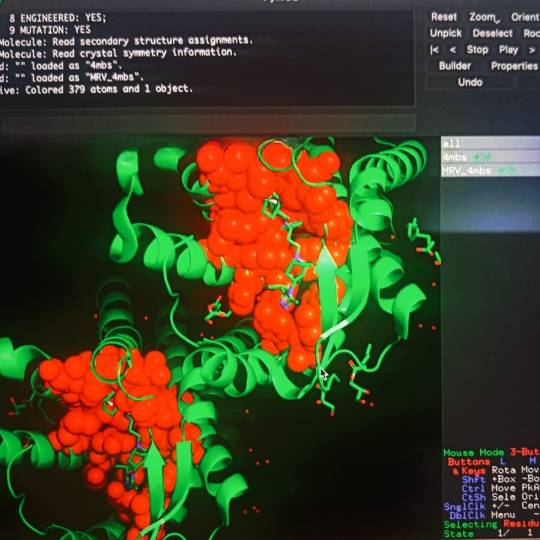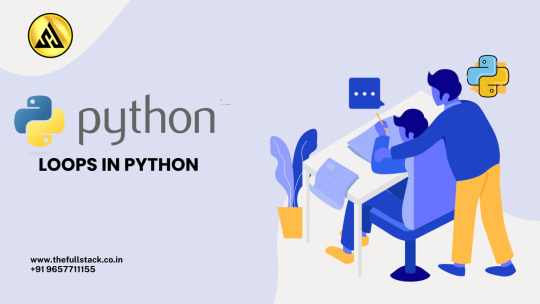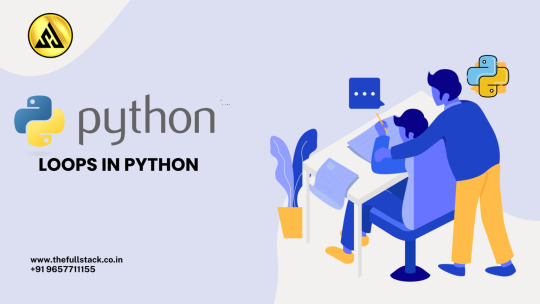#Python nested loops
Explore tagged Tumblr posts
Text
Day-5: Mastering Python Loops
Python Boot Camp-2023: Day-5
Python Loop: A Powerful Tool for Iterative Tasks Python, one of the most popular programming languages, offers a wide range of features and functionalities. Among these, loops stand out as a powerful tool for performing repetitive tasks. In this article, we’ll explore Python loops, their types, usage, and best practices to optimize your code. 1. Introduction to Python Loops Loops are essential…

View On WordPress
#Iterative tasks in Python#List comprehensions in PythonPython loop best practices#Python coding efficiency#Python database interactions#Python for loop#Python loop examples#Python loop optimization#Python loop performance#Python loop syntax#Python loop tutorial#Python loops#Python nested loops#Python programming tips#Python while loop
0 notes
Text
I'm taking a class on like. advanced data structures and blah blah whatever blah. riveting stuff. Anyway one the main things we're being taught in the class is runtime optimization which makes sense. but like. why is it being taught in python of all languages
#also the professor writes python like he's writing c sharp. its really bizarre#ramblings#whatever. wearing a t-shirt that says “I <3 nested for loops”
2 notes
·
View notes
Text
I'm trying to learn how to code in Python for my job and I feel like I hit a programing rite of passage by making a nested for and while loop with no exit condition 👌
205 notes
·
View notes
Text
CAFFEINE, CODE, AND COUCH CONFESSIONS



Warnings: coffee addiction
Tim Drake, the resident tech genius of Wayne Manor, had a mission: to teach you the intricacies of coding. Armed with a whiteboard, a stack of textbooks, and a steely determination, he embarked on this noble quest. Little did he know that unraveling the mysteries of Python and JavaScript would be the least challenging part.
Tim sat you down in the cozy corner of the Batcave, the glow of the Batcomputer casting shadows on his face. He explained loops, variables, and functions with the fervor of a preacher. But your brain? It was like a stubborn old laptop running Windows 95—slow, glitchy, and prone to crashing.
"Okay, so if you have a nested loop," Tim said, pointing at the whiteboard, "you'll need to—"
You interrupted. Again. "Wait, wait. What's a nested loop? Is it like a Russian doll situation?"
Tim sighed, rubbing his temples. "No, it's not—"
"But what if the Russian doll is an array?" you asked, eyes wide.
Tim's patience wavered. "It's not—"
"But what if the array contains Batman's utility belt gadgets?" you persisted.
He pinched the bridge of his nose. "That's not—"
Coding fatigue set in. Tim's eyes glazed over as you continued your relentless questioning. He needed a distraction—a break from the syntax and semicolons. So, he proposed a truce: "How about we take a snack break?"
You perked up. "Snacks? Now you're speaking my language."
Soon, the Batcave echoed with the rustling of chip bags and the clinking of coffee mugs. Tim brewed a fresh pot of coffee—the fifth one that day—and you raised an eyebrow.
"Tim, you're going to turn into a jittery metahuman," you warned.
He grinned, sipping from his mug. "Nah, I've built up a tolerance."
The couch beckoned, its cushions inviting. Tim abandoned the whiteboard, and you both sank into its plush embrace. Laptops forgotten, you fired up the gaming console. The Batcave's massive screen displayed the latest multiplayer shooter.
"Ready to kick some virtual butt?" you asked, controller in hand.
Tim hesitated. "Actually, can we watch movies instead?"
You raised an eyebrow. "Movies? Since when do you—"
"—binge-watch romantic comedies?" Tim finished, cheeks flushing. "I may or may not have a soft spot for cheesy love stories."
And so, you traded code for rom-coms, coffee for popcorn. Tim's head found its way to your lap, and you stroked his hair absentmindedly.
"Promise me," you said, "no more coffee. Your heart rate is rivaling the Bat-Signal."
He grumbled but complied. "Fine. But only because you're the best code-cracking partner."
As the credits rolled on the screen, Tim whispered, "Maybe I'll write an algorithm to predict our next movie choice."
You chuckled. "Or we could just flip a coin."
And there, in the dim glow of the Batcave, you realized that maybe—just maybe—love was the most complex code of all.
#yn#spotify#x reader#viralpost#batfam#x yn#tim drake#timothy drake#red robin#batboy#tim drake x reader#tim drake x y/n
138 notes
·
View notes
Text
All Right, Let's Do a Dumb One
LeetCode has a bunch of problems that are at this point almost famous for how laughably unrepresentative they are of work in the coding world. Like, there are points where demonstrating that you can solve one also incidentally demonstrates that you know certain kinds of critical thinking, and those questions are genuinely quite good, but most of the time it's just a Credit Score kind of thing where what you demonstrate is that you spent time practicing on LeetCode, and therefore the site made itself necessary by getting enough business decision-makers to trust it. Anyway.
This is a good example because if I got this as a question during the interview the first thing I'd do is include a disclaimer.
The challenge is to rotate an image 90 degrees. The "image" is represented by a 2D array numbered, so this happens. 123 741 456 -> 852 789 963
Now, the question says they want you to change it in-place, meaning no making a new array and slotting things in. The disclaimer I'd include is: This is a terrible idea. Making a 2D array - even a very large one, such as the kind you'd need to display something hi-def on an IMAX theater screen - is not horribly memory-intensive in the scale of memory that our computers work with today. And working in-place is terribly error-prone, both in initial creation (which someone could theoretically lay at your feet - shouldn't you be good enough to get around that?) AND in maintenance, meaning even if I know I'M hypercompetent at coding and can do it all in-place, I'm metaphorically making a bridge out of hard-to-replace materials and setting that bridge up to fall apart when the maintenance guy doesn't know how to repair it. Not doing it the way they demand you do it for the question would be part of coding best practices.
But what the hell. Let's do it. For the sake of argument.
I'd still be doing a microcosm of the same. You have to record what's in a slot without deleting it.
I'm wondering whether the intent is to run this via breadth-first search, in order to work out which spaces have already been processed? I'm going to go on that assumption.
So in a Rubik's Cube kind of way, I'm going to start from the corners. Because they're the easiest to mathematically transform to each other regardless of size, right? We're supposed to be able to do this whether the square we're rotating is 3x3 or 300x300. For a mercy, it is at least guaranteed to be a square.
We make a (starts off empty) list of processed spaces.
We make a (starts off empty) list of spaces to look at.
for x, y what happens on "rotate" exactly? In terms of corners, for an nxn grid (0, 0) gets moved to (n-1, 0) which gets moved to (n-1, n-1) which gets moved to (0, n-1) which gets moved to (0, 0). Like, in a 4x4 grid (3, 3)'s contents get moved to (0, 3). What about that second space? (1, 0) turns into (3, 1). (2, 0) turns into (3, 2). So for the top row at least, you can reverse the x and y values and invert the number of the y value, and that does it?
...I think this means you want depth-first search, actually. Because you want to be handling the square each time in order to minimize how much info you're holding at a time.
What happens is you make a nested for loop, like
for i in array: for j in list: while (i,j) not in fixed: {Block of code that adds the 4 permutations of (x,y), (-y-1,x), (-x-1,-y-1), (y,-x-1) to a list for processing and then processes them in order, finally adding i,j to fixed when it's done}
The reason this works in Python is that calling for "-1" in a list is the same as saying "length of the list -1." So on a 4x4, calling "-x-1" when x is 0 will loop around the other side of the list to find the 3.
At that point, you're only holding two points of data - the item you've just "picked up" from a given space and then the contents of the space you'll be "putting it down" in. Then you swap it out for what's in the target location.
Again, this would all be a LOT easier to just do by writing to a new list.
At that point, for each space you'd just find the space 90 degrees counterclockwise from it and set that value into the corresponding space.
15 notes
·
View notes
Text



this week on megumi.fm ▸ coding and coffeeshops
📋 Tasks
💻 Internship ↳ lab meet!!! got to learn about the other projects in the lab ↳ got work from home approved!! ↳ optimize protein seq code // account for missing residues ✅ ↳ add on a binding site identifier function for code using 4.5A distance threshold ✅ ↳ optimize binding site code // reducing time complexity for large PDB file inputs ✅ ↳ download and extract alphafold human protein repository and analyze pdb file formats ↳ set up progress tracker and upload code on colab ✅ 🎓 Uni ↳ Final Project: update images quality according to changes mentioned ✅ ↳ renew uni email for extra credit classes ✅ ↳ extra credit classes started this week! 🩺Radiomics Projects ↳ call with teammates to discuss next steps ✅ 📧 Application-related ↳ finished masters application form for 1/1 Uni (waiting on my referee reports) ✅ ↳ finalize referee report from my profs ✅
📅 Daily-s
🛌 consistent sleep [7/7] 💧 good water intake [5/7] 👟 exercise [5/7]
Fun Stuff this week
🍻 met up with my bestie @muakrrr <3 it was a stressful tuesday so meeting him for lunch was super comforting! he bought this cute purple drink and I got myself some ginger ale and the waiter served us the wrong drinks (gender and expectations something something) and it was amusing to watch them get confused when we corrected them 🎂 mom's b'day this week!! went out for dinner with her!! 🛒 went shopping with relatives who I haven't seen in years. bought myself a book! (rip my bookshelf) ☕ went out for coffee and dinner with my girlies (the same besties who I exchanged mugs with). we're trying to spend as much time together as possible before we leave to different countries for our masters 🎮 continuing the beginner's guide 📺 ongoing: Marry my Husband, Cherry Magic Th, Last Twilight 📺 binged: KinnPorsche The Series
📻 This week's soundtrack
Love Wins All by IU (been crying over this music video for days now. it's beautiful) KinnPorsche theme by Slot Machine: Kinn's theme [aka Phiang Waichai; TH] | Porche's theme [aka Free Fall; Eng] (first of all this is one of the catchiest theme songs to exist second only to SPECIALZ aka the JJK s2 op i'm also particularly losing my mind over how the two themes are love letters to the main characters from each other... the narrative parallels of it all are driving me insane sldkhlaksjkshs) Dum Dum by Jeff Satur + the Live Unchained version where his vocals are heavenly (maybe im so drawn to this song because the chorus is similar to the melodic motifs of the KPTS themes/soundtrack, either way, the show introduced me to him and god. I've been voraciously consuming his discography.) Ghost by Jeff Satur (on repeat all week. thoroughly obsessed with this song- the lyricism, his voice, the storyline in the MV, his acting, everything. wow. truly.)
---
[Jan 22 to 28 ; week 4/52 || I. love. my. internship. like. I have been having the most fun time problem solving and troubleshooting. it's also super satisfying to see the outcome of my code. it's been a while since I used python (I've been coding on C) so I forget that python has a lot of inbuilt functions that would do the same tasks I inadvertently entrust my nested loops with, and finding out about them is always so joyous (although it means I have to scrap off several chunks of code). i am a bit annoyed though, because the other intern isn't really doing any work that we're entrusted with so I'm having to carry the team and it's taking me too much time. but oh well. I've suggested we split tasks from next week, hopefully that'll make things better.
I've also been procrastinating a lot when it comes to my masters applications and it really hit me this week when I had to run to uni several times to get things approved and completed. Now that I'll get to work from home I need to set up a proper schedule to get application work completed wayy in advance. also need to resume my GRE prep from next week.]
#52wktracker#studyblr#study blog#studyspo#stemblr#stem student#study goals#student life#college student#studying#stem studyblr#adhd studyblr#adhd student#study motivation#100 days of productivity#study inspo#study inspiration#gradblr#uniblr#studyinspo#sciblr#study aesthetic#study blr#study motivator#100 days of self discipline#100 days of studying#stem academia#bio student#100 dop#100dop
27 notes
·
View notes
Text
How to Become a Data Scientist in 2025 (Roadmap for Absolute Beginners)

Want to become a data scientist in 2025 but don’t know where to start? You’re not alone. With job roles, tech stacks, and buzzwords changing rapidly, it’s easy to feel lost.
But here’s the good news: you don’t need a PhD or years of coding experience to get started. You just need the right roadmap.
Let’s break down the beginner-friendly path to becoming a data scientist in 2025.
✈️ Step 1: Get Comfortable with Python
Python is the most beginner-friendly programming language in data science.
What to learn:
Variables, loops, functions
Libraries like NumPy, Pandas, and Matplotlib
Why: It’s the backbone of everything you’ll do in data analysis and machine learning.
🔢 Step 2: Learn Basic Math & Stats
You don’t need to be a math genius. But you do need to understand:
Descriptive statistics
Probability
Linear algebra basics
Hypothesis testing
These concepts help you interpret data and build reliable models.
📊 Step 3: Master Data Handling
You’ll spend 70% of your time cleaning and preparing data.
Skills to focus on:
Working with CSV/Excel files
Cleaning missing data
Data transformation with Pandas
Visualizing data with Seaborn/Matplotlib
This is the “real work” most data scientists do daily.
🧬 Step 4: Learn Machine Learning (ML)
Once you’re solid with data handling, dive into ML.
Start with:
Supervised learning (Linear Regression, Decision Trees, KNN)
Unsupervised learning (Clustering)
Model evaluation metrics (accuracy, recall, precision)
Toolkits: Scikit-learn, XGBoost
🚀 Step 5: Work on Real Projects
Projects are what make your resume pop.
Try solving:
Customer churn
Sales forecasting
Sentiment analysis
Fraud detection
Pro tip: Document everything on GitHub and write blogs about your process.
✏️ Step 6: Learn SQL and Databases
Data lives in databases. Knowing how to query it with SQL is a must-have skill.
Focus on:
SELECT, JOIN, GROUP BY
Creating and updating tables
Writing nested queries
🌍 Step 7: Understand the Business Side
Data science isn’t just tech. You need to translate insights into decisions.
Learn to:
Tell stories with data (data storytelling)
Build dashboards with tools like Power BI or Tableau
Align your analysis with business goals
🎥 Want a Structured Way to Learn All This?
Instead of guessing what to learn next, check out Intellipaat’s full Data Science course on YouTube. It covers Python, ML, real projects, and everything you need to build job-ready skills.
https://www.youtube.com/watch?v=rxNDw68XcE4
🔄 Final Thoughts
Becoming a data scientist in 2025 is 100% possible — even for beginners. All you need is consistency, a good learning path, and a little curiosity.
Start simple. Build as you go. And let your projects speak louder than your resume.
Drop a comment if you’re starting your journey. And don’t forget to check out the free Intellipaat course to speed up your progress!
2 notes
·
View notes
Text
Iterations - for loop
Iteration, aka repeating, is a solution for tasks that need to be done over and over again.
Instead of writing dozens of lines of code for the same purpose, we can simplify it and shorten it to just a couple of lines. This way the code is both easier to read for the other programmers (fellow people hehe) and faster to process for the computer.
Also, simpler code reduces errors rate.
Examples of iterations are loops.
Looping means repeating something until a particular condition is satisfied.
Python has 3 Basic Loops:
For Loop - used when we know number of iterations (repetitions) in advance.
While Loop - for situations where the number of iterations is unknown beforehand.
Nested Loop - using one looping statement inside another looping statement.
For loop is used to execute the same instruction over and over again, a specific number of times.
for i in range(5): print(“Hello!”) Output: Hello! Hello! Hello! Hello! Hello!
In the first line, we declared how many repetitions are needed. In the second line, we wrote what should be repeated a given number of times. In this case, we asked Python to print the string “Hello!” 5 times.
Basic structure of the for loop:
for i in range(5): print(“Hello!”)
for - a keyword that signals that “for loop” is starting.
i - internal variable name which is keeping the counter value. Stands for “iteration”. We can read the whole line as “for 5 iterations/repetitions, please do the following:” For every loop, the 'i' variable increases by 1 because it's the counter. 'i' doesn't have to be 'i', we can switch it to another letter or another word, that are python approved for this (for example, you can’t use name of defined function instead of 'i').
#Loop using "unicorn" as internal variable, instead of "i" for unicorn in range(10): print(unicorn) #still works!
in range() - represents the list of numbers we are looping through (number of time the iteration is running). Python starts the counter from 0. It means that range(5) - will give a sequence of 5 numbers: 0, 1, 2, 3, 4 range() function has 3 parameters(start, end, steps), default values for start is 0 and step is 1. When we write range(5), we only give one parameter, and the function still works, because Python reads it as range(0,5,1) and the sequence starts with 0, increases by 5 counts, with step between each number being 1, by default.
We can change the parameters: range(1,20,3) this would result in iterations that starts from 1, goes up by 3 steps with the upper limit of 20: 1, 4,7,10,13,16,19.
Example: #print every 2 numbers (evens): for i in range (2, 10, 2): print(x) output: 2 4 6 8 (!) output does not include 10 because 10 is the upper limit (result only includes number under 10)
: adding a colon sign in the end of the first line is mandatory, otherwise an error will occur. Finally in the next line, we start writing the instruction, that is supposed to be repeated. This part isn’t starting right away, it should be indented. Indentation is the blank gap at the beginning of lines. Normal indentation is 4 spaces/tab long. Python would recognize 2 spaces or 4 spaces as an indentation, but 4 spaces length is more agreed upon and is used more wildly.
tip: How to write an instruction to get output of a list that starts from 1 instead of 0, accompanied by a string:
for i in range(10): print(i+1, "I love you")
4 notes
·
View notes
Text
Python Loops Tutorial | Loops In Python | Python Loops Tutorial for Beginners
Let's go through a basic tutorial on loops in Python. This tutorial is designed for beginners, and we'll cover the two main types of loops in Python: for and while loops.
1. For Loop:
The for loop is used to iterate over a sequence (such as a list, tuple, string, or range).# Example 1: Iterate over a list fruits = ["apple", "banana", "cherry"] for fruit in fruits: print(fruit) # Output: # apple # banana # cherry # Example 2: Iterate over a range of numbers for i in range(5): print(i) # Output: # 0 # 1 # 2 # 3 # 4
2. While Loop:
The while loop is used to repeatedly execute a block of code as long as the specified condition is true.# Example 3: Simple while loop count = 0 while count < 5: print(count) count += 1 # Output: # 0 # 1 # 2 # 3 # 4
3. Loop Control Statements:
break: Terminates the loop.
continue: Skips the rest of the code inside the loop for the current iteration.
else clause with loops: Executed when the loop condition becomes False.
# Example 4: Using break and continue for i in range(10): if i == 3: continue # Skip the rest of the code for this iteration elif i == 8: break # Exit the loop when i is 8 print(i) else: print("Loop completed") # Output: # 0 # 1 # 2 # 4 # 5 # 6 # 7
4. Nested Loops:
You can use loops inside other loops.# Example 5: Nested loops for i in range(3): for j in range(2): print(f"({i}, {j})") # Output: # (0, 0) # (0, 1) # (1, 0) # (1, 1) # (2, 0) # (2, 1)
This is a basic introduction to loops in Python. Practice with different examples to solidify your understanding. In Part 2, you can explore more advanced concepts and practical applications of loops in Python.
Watch Now: -The Knowledge Academy
2 notes
·
View notes
Text
Day-3: Mastering Control Flow and Logical Operators in Python
Python Boot Camp - 2023
Python is a versatile and widely used programming language known for its simplicity and readability. One of the fundamental aspects of programming is controlling the flow of execution based on certain conditions. Python provides various control flow statements and logical operators that allow programmers to make decisions and perform actions accordingly. 1. Introduction to Control Flow in…

View On WordPress
#Nested control flow Python#Python and operato#Python code execution#Python coding tips#Python conditional statements#Python control flow#Python decision-making#Python elif statement#Python else statement#Python for loop#Python if statement#Python logical operators#Python looping and control flow#Python not operator#Python or operator#Python programming best practices#Python programming guide#Python programming techniques#Python while loop#Ternary operator Python
0 notes
Text
Oh man, if only I had the power to write a math curriculum that incorporated programming concepts like vector arithmetic, object-oriented algebra, algorithm card games... and in high school kids should learn how to use python to do the math for them. Imagine telling your students that they can use a calculator to do all of the math for them, so long as they build the calculator themselves!
def the_exponenterrr(x, n, a, c): y = a*x**n + c return y
I started playing around with RPG Maker 2000 when it was new, and even though all I ever did was pretty basic event-scripting, it was still quite foundational to my understanding of how to code by teaching me loops, variables, nested-ifs, and more!
The fact that there’s an actually functional website for the library of Babel is one of those things that fucks me up more and more the more I think about the implications.
112K notes
·
View notes
Text
Inside the Course: What You'll Learn in GVT Academy's Data Analyst Program with AI and VBA

If you're searching for the Best Data Analyst Course with VBA using AI in Noida, GVT Academy offers a cutting-edge curriculum designed to equip you with the skills employers want in 2025. In an age where data is king, the ability to analyze, automate, and visualize information is what separates good analysts from great ones.
Let’s explore the modules inside this powerful course — from basic tools to advanced technologies — all designed with real-world outcomes in mind.
Module 1: Advanced Excel – Master the Basics, Sharpen the Edge
You start with Advanced Excel, a must-have tool for every data analyst. This module helps you upgrade your skills from intermediate to advanced level with:
Advanced formulas like XLOOKUP, IFERROR, and nested functions
Data cleaning techniques using Power Query
Creating interactive dashboards with Pivot Tables
Case-based learning from real business scenarios
This strong foundation ensures you're ready to dive deeper into automation and analytics.
Module 2: VBA Programming – Automate Your Data Workflow
Visual Basic for Applications (VBA) is a game-changer when it comes to saving time. Here’s what you’ll learn:
Automate tasks with macros and loops
Build interactive forms for better data entry
Develop automated reporting tools
Integrate Excel with external databases or emails
This module gives you a serious edge by teaching real-time automation for daily tasks, making you stand out in interviews and on the job.
Module 3: Artificial Intelligence for Analysts – Data Meets Intelligence
This is where things get futuristic. You’ll learn how AI is transforming data analysis:
Basics of machine learning with simple use cases
Use AI tools (like ChatGPT or Excel Copilot) to write smarter formulas
Forecast sales or trends using Python-based models
Explore AI in data cleaning, classification, and clustering
GVT Academy blends the power of AI and VBA to offer a standout Data Analyst Course in Noida, designed to help students gain a competitive edge in the job market.
Module 4: SQL – Speak the Language of Databases
Data lives in databases, and SQL helps you retrieve it efficiently. This module focuses on:
Writing SELECT, JOIN, and GROUP BY queries
Creating views, functions, and subqueries
Connecting SQL output directly to Excel and Power BI
Handling large volumes of structured data
You’ll practice on real datasets and become fluent in working with enterprise-level databases.
Module 5: Power BI – Turn Data into Stories
More than numbers, data analysis is about discovering what the numbers truly mean. In the Power BI module, you'll:
Import, clean, and model data
Create interactive dashboards for business reporting
Use DAX functions to create calculated metrics
Publish and share reports using Power BI Service
By mastering Power BI, you'll learn to tell data-driven stories that influence business decisions.
Module 6: Python – The Language of Modern Analytics
Python is one of the most in-demand skills for data analysts, and this module helps you get hands-on:
Python fundamentals: Variables, loops, and functions
Working with Pandas, NumPy, and Matplotlib
Data manipulation, cleaning, and visualization
Introduction to machine learning with Scikit-Learn
Even if you have no coding background, GVT Academy ensures you learn Python in a beginner-friendly and project-based manner.
Course Highlights That Make GVT Academy #1
👨🏫 Expert mentors with industry experience
🧪 Real-life projects for each module
💻 Live + recorded classes for flexible learning
💼 Placement support and job preparation sessions
📜 Certification recognized by top recruiters
Every module is designed with job-readiness in mind, not just theory.
Who Should Join This Course?
This course is perfect for:
Freshers wanting a high-paying career in analytics
Working professionals in finance, marketing, or operations
B.Com, BBA, and MBA graduates looking to upskill
Anyone looking to switch to data-driven roles
Final Words
If you're looking to future-proof your career, this course is your launchpad. With six powerful modules and job-focused training, GVT Academy is proud to offer the Best Data Analyst Course with VBA using AI in Noida — practical, placement-driven, and perfect for 2025.
📞 Don’t Miss Out – Limited Seats. Enroll Now with GVT Academy and Transform Your Career!
1. Google My Business: http://g.co/kgs/v3LrzxE
2. Website: https://gvtacademy.com
3. LinkedIn: www.linkedin.com/in/gvt-academy-48b916164
4. Facebook: https://www.facebook.com/gvtacademy
5. Instagram: https://www.instagram.com/gvtacademy/
6. X: https://x.com/GVTAcademy
7. Pinterest: https://in.pinterest.com/gvtacademy
8. Medium: https://medium.com/@gvtacademy
#gvt academy#data analytics#advanced excel training#data science#python#sql course#advanced excel training institute in noida#best powerbi course#power bi#advanced excel#vba
0 notes
Text
Is Python Training Certification Worth It? A Complete Breakdown
Introduction: Why Python, Why Now?
In today's digital-first world, learning Python is more than a tech trend it's a smart investment in your career. Whether you're aiming for a job in data science, web development, automation, or even artificial intelligence, Python opens doors across industries. But beyond just learning Python, one big question remains: Is getting a Python certification truly worth it? Let’s break it all down for you.
This blog gives a complete and easy-to-understand look at what Python training certification involves, its real-world value, the skills you’ll gain, and how it can shape your future in the tech industry.

What Is a Python Certification Course?
A Python certification course is a structured training program that equips you with Python programming skills. Upon completion, you receive a certificate that validates your knowledge. These programs typically cover:
Core Python syntax
Data structures (lists, tuples, sets, dictionaries)
Functions and modules
Object-oriented programming
File handling
Exception handling
Real-world projects and coding tasks
Many certification programs also dive into specialized areas like data analysis, machine learning, and automation.
Why Choose Python Training Online?
Python training online offers flexibility, accessibility, and practical experience. You can learn at your own pace, access pre-recorded sessions, and often interact with instructors or peers through discussion boards or live sessions.
Key Benefits of Online Python Training:
Learn from anywhere at any time
Save time and commute costs
Access recorded lessons and code examples
Practice real-world problems in sandbox environments
Earn certificates that add credibility to your resume
What You’ll Learn in a Python Certification Course
A typical Python certification course builds a solid foundation while preparing you for real-world applications. Here’s a step-by-step breakdown of the topics generally covered:
1. Python Basics
Installing Python
Variables and data types
Input/output operations
Basic operators and expressions
2. Control Flow
Conditional statements (if, elif, else)
Loops (for, while)
Loop control (break, continue, pass)
3. Data Structures
Lists, Tuples, Sets, Dictionaries
Nested structures
Built-in methods
4. Functions
Defining and calling functions
Arguments and return values
Lambda and anonymous functions
5. Object-Oriented Programming (OOP)
Classes and objects
Inheritance and polymorphism
Encapsulation and abstraction
6. Modules and Packages
Creating and importing modules
Built-in modules
Using packages effectively
7. File Handling
Reading and writing text and binary files
File methods and context managers
8. Error and Exception Handling
Try-except blocks
Raising exceptions
Custom exceptions
9. Hands-On Projects
Calculator, contact manager, data scraper
Mini web applications or automation scripts
Each section ends with assessments or projects to apply what you’ve learned.
Real-World Value: Is It Worth It?
Yes. A Python training certification proves your ability to code, solve problems, and think logically using one of the most in-demand languages in the world.
Here’s how it adds value:
Resume Booster: Employers look for certifications to confirm your skills.
Interview Confidence: It helps you discuss concepts and projects fluently.
Skill Validation: Certification shows structured learning and consistent practice.
Career Mobility: Useful across fields like automation, finance, healthcare, education, and cloud computing.
Industry Demand for Python Skills:
Python is the #1 programming language according to multiple tech industry surveys.
Data shows that Python developers earn an average of $110,000/year in the U.S.
Job postings mentioning Python have grown by over 30% annually in tech job boards.
Who Should Take Python Training?
Python is beginner-friendly and ideal for:
Career switchers moving into tech
Recent graduates seeking to upskill
IT professionals expanding their language toolkit
Data analysts looking to automate reports
Web developers wanting to integrate back-end logic
QA testers or manual testers automating test cases
No prior coding background? No problem. The syntax and logic of Python are easy to learn, making it perfect for newcomers.
Top Online Python Courses: What Makes Them Stand Out?
A good online certification in Python includes:
Clear learning paths (Beginner to Advanced)
Project-based learning
Regular assignments and quizzes
Instructor-led sessions
Code-along demos
Interview prep support
You’ll also benefit from industry-expert guidance and hands-on practice that aligns with job roles like:
Python Developer
Automation Engineer
Data Analyst
Machine Learning Engineer
DevOps Support Engineer
How a Certified Python Skillset Helps in the Job Market
Certified Python professionals can confidently step into roles across multiple domains. Here are just a few examples:
Industry
Use of Python
Finance
Automating calculations, data modeling, trading bots
Healthcare
Analyzing patient records, diagnostics, imaging
E-commerce
Building web apps, handling user data, recommendations
Education
Online tutoring platforms, interactive content
Media & Gaming
Scripting, automation, content generation
Python certification helps you stand out and back your resume with verified skills.
Common Python Program Ideas to Practice
Practicing real-world Python program ideas will sharpen your skills. Some examples:
Web scraper: Pull news headlines automatically.
To-do list app: Store and edit tasks using files or databases.
Weather app: Use APIs to show forecasts.
Quiz app: Build a console-based quiz game.
Data visualizer: Create graphs with user input.
These ideas not only test your knowledge but also help you build a portfolio.
How Certification Enhances Your Career Growth
Getting a Python certification course helps in:
Job Placements: Certification shows employers you’re job-ready.
Career Transition: It bridges the gap between your current role and tech jobs.
Higher Salaries: Certified professionals often get better salary offers.
Freelance Opportunities: Certification builds trust for independent work.
Continued Learning: Prepares you for specialized tracks like AI, ML, or full-stack development.
Sample Python Code: A Glimpse into Real-World Logic
Here’s a simple example of file handling in Python:
python
def write_to_file(filename, data):
with open(filename, 'w') as file:
file.write(data)
def read_from_file(filename):
with open(filename, 'r') as file:
return file.read()
write_to_file('sample.txt', 'Learning Python is rewarding!')
print(read_from_file('sample.txt'))
This simple project covers file handling, function usage, and string operations key concepts in any Python training online course.
Things to Consider Before Choosing a Course
To make your online certification in Python truly worth it, ensure the course offers:
Well-structured syllabus
Projects that simulate real-world use
Active instructor feedback
Placement or job-readiness training
Lifetime access or resources
Test simulations or quizzes
Summary: Is It Worth the Time and Money?
In short, yes a Python certification is worth it.
Whether you're just starting out or looking to grow your tech skills, Python is a powerful tool that opens many doors. A certification not only helps you learn but also proves your commitment and ability to apply these skills in real scenarios.
Final Thoughts
Python is no longer optional, it’s essential. A Python certification course gives you structure, credibility, and a roadmap to professional success. It’s one of the smartest ways to future-proof your career in tech.
Start your learning journey with H2K Infosys today. Enroll now for hands-on Python training and expert-led certification support that prepares you for the real tech world.
#pythoncertification#pythononlinecoursecertification#pythoncertificationcourse#pythontraining#pythononlinetraining#pythonbasicstraining#pythontraininginstitute#pythontrainingcourse
0 notes
Text
Python for Beginners: Learn the Basics Step by Step.

Python for Beginners: Learn the Basics Step by Step
In today’s fast-paced digital world, programming has become an essential skill, not just for software developers but for anyone looking to boost their problem-solving skills or career potential. Among all the programming languages available, Python has emerged as one of the most beginner-friendly and versatile languages. This guide, "Python for Beginners: Learn the Basics Step by Step," is designed to help complete novices ease into the world of programming with confidence and clarity.
Why Choose Python?
Python is often the first language recommended for beginners, and for good reason. Its simple and readable syntax mirrors natural human language, making it more accessible than many other programming languages. Unlike languages that require complex syntax and steep learning curves, Python allows new learners to focus on the fundamental logic behind coding rather than worrying about intricate technical details.
With Python, beginners can quickly create functional programs while gaining a solid foundation in programming concepts that can be applied across many languages and domains.
What You Will Learn in This Guide
"Python for Beginners: Learn the Basics Step by Step" is a comprehensive introduction to Python programming. It walks you through each concept in a logical sequence, ensuring that you understand both the how and the why behind what you're learning.
Here’s a breakdown of what this guide covers:
1. Setting Up Python
Before diving into code, you’ll learn how to set up your development environment. Whether you’re using Windows, macOS, or Linux, this section guides you through installing Python, choosing a code editor (such as VS Code or PyCharm), and running your first Python program with the built-in interpreter or IDE.
You’ll also be introduced to online platforms like Replit and Jupyter Notebooks, where you can practice Python without needing to install anything.
2. Understanding Basic Syntax
Next, we delve into Python’s fundamental building blocks. You’ll learn about:
Keywords and identifiers
Comments and docstrings
Indentation (critical in Python for defining blocks of code)
How to write and execute your first "Hello, World!" program
This section ensures you are comfortable reading and writing simple Python scripts.
3. Variables and Data Types
You’ll explore how to declare and use variables, along with Python’s key data types:
Integers and floating-point numbers
Strings and string manipulation
Booleans and logical operators
Type conversion and input/output functions
By the end of this chapter, you’ll know how to take user input, store it in variables, and use it in basic operations.
4. Control Flow: If, Elif, Else
Controlling the flow of your program is essential. This section introduces conditional statements:
if, elif, and else blocks
Comparison and logical operators
Nested conditionals
Common real-world examples like grading systems or decision trees
You’ll build small programs that make decisions based on user input or internal logic.
5. Loops: For and While
Loops are used to repeat tasks efficiently. You'll learn:
The for loop and its use with lists and ranges
The while loop and conditions
Breaking and continuing in loops
Loop nesting and basic patterns
Hands-on exercises include countdown timers, number guessers, and basic text analyzers.
6. Functions and Modules
Understanding how to write reusable code is key to scaling your projects. This chapter covers:
Defining and calling functions
Parameters and return values
The def keyword
Importing and using built-in modules like math and random
You’ll write simple, modular programs that follow clean coding practices.
7. Lists, Tuples, and Dictionaries
These are Python’s core data structures. You'll learn:
How to store multiple items in a list
List operations, slicing, and comprehensions
Tuple immutability
Dictionary key-value pairs
How to iterate over these structures using loops
Practical examples include building a contact book, creating shopping lists, or handling simple databases.
8. Error Handling and Debugging
All coders make mistakes—this section teaches you how to fix them. You’ll learn about:
Syntax vs. runtime errors
Try-except blocks
Catching and handling common exceptions
Debugging tips and using print statements for tracing code logic
This knowledge helps you become a more confident and self-sufficient programmer.
9. File Handling
Learning how to read from and write to files is an important skill. You’ll discover:
Opening, reading, writing, and closing files
Using with statements for file management
Creating log files, reading user data, or storing app settings
You’ll complete a mini-project that processes text files and saves user-generated data.
10. Final Projects and Next Steps
To reinforce everything you've learned, the guide concludes with a few beginner-friendly projects:
A simple calculator
A to-do list manager
A number guessing game
A basic text-based adventure game
These projects integrate all the core concepts and provide a platform for experimentation and creativity.
You’ll also receive guidance on what to explore next, such as object-oriented programming (OOP), web development with Flask or Django, or data analysis with pandas and matplotlib.
Who Is This Guide For?
This guide is perfect for:
Absolute beginners with zero programming experience
Students and hobbyists who want to learn coding as a side interest
Professionals from non-technical backgrounds looking to upskill
Anyone who prefers a step-by-step, hands-on learning approach
There’s no need for a technical background—just a willingness to learn and a curious mindset.
Benefits of Learning Python
Learning Python doesn’t just teach you how to write code—it opens doors to a world of opportunities. Python is widely used in:
Web development
Data science and machine learning
Game development
Automation and scripting
Artificial Intelligence
Finance, education, healthcare, and more
With Python in your skillset, you’ll gain a competitive edge in the job market, or even just make your daily tasks more efficient through automation.
Conclusion
"Python for Beginners: Learn the Basics Step by Step" is more than just a programming guide—it’s your first step into the world of computational thinking and digital creation. By starting with the basics and building up your skills through small, manageable lessons and projects, you’ll not only learn Python—you’ll learn how to think like a programmer.
0 notes
Text
Loops in Python: Mastering for and while Loops with Examples

Learn how to use for loops and while loops in Python with real-time coding examples and practical explanations. This beginner-friendly Python tutorial helps you understand the core logic behind loops and how they simplify repetitive tasks in programming. Dive into Python syntax for loop creation, loop control statements like break, continue, and pass, and discover how to avoid infinite loops.
Master nested loops, loop counters, and iteration through lists, dictionaries, and strings using for-in loops. Understand how while loops work in automation and condition-based tasks. This guide is perfect for students, beginners in Python programming, and developers preparing for coding interviews or Python certification.
Explore Python loops in data analysis, web scraping, and file handling projects. With clear examples and tips, this resource will help you build efficient, scalable, and clean Python scripts. Whether you’re coding for data science, machine learning, or web development, loop mastery is a key step in your Python journey.
0 notes
Text
Loops in Python: Mastering for and while Loops with Examples

Learn how to use for loops and while loops in Python with real-time coding examples and practical explanations. This beginner-friendly Python tutorial helps you understand the core logic behind loops and how they simplify repetitive tasks in programming. Dive into Python syntax for loop creation, loop control statements like break, continue, and pass, and discover how to avoid infinite loops.
Master nested loops, loop counters, and iteration through lists, dictionaries, and strings using for-in loops. Understand how while loops work in automation and condition-based tasks. This guide is perfect for students, beginners in Python programming, and developers preparing for coding interviews or Python certification.
Explore Python loops in data analysis, web scraping, and file handling projects. With clear examples and tips, this resource will help you build efficient, scalable, and clean Python scripts. Whether you’re coding for data science, machine learning, or web development, loop mastery is a key step in your Python journey.
0 notes